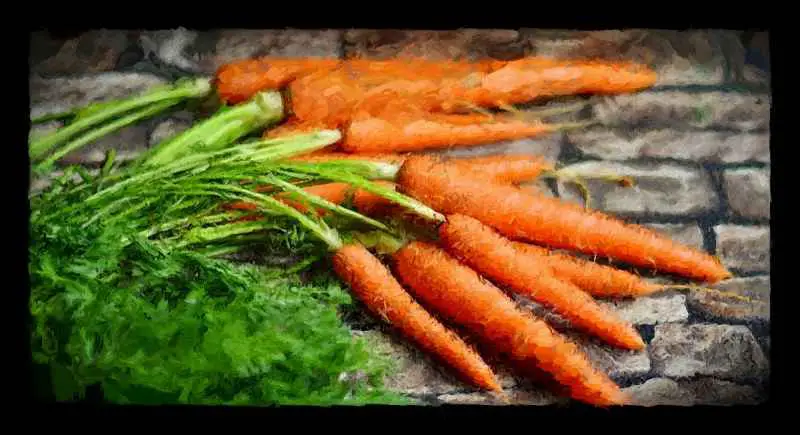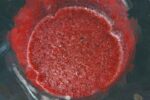Make Lacto-Fermented Fruit Like a 3 Michelin Star Restaurant
Make your dream of eating at a 3 Michelin star restaurant come true. Believe it or not you only need two ingredients: FRUIT and SALT.
Yes, I know; when you think about fermented fruit your mind probably goes to honey, sweetness, fizzy drinks and alcohol.
But fermenting fruit with salt ( aka lacto-fermenting ) is a tested alternative and another delicious way to preserve and enrich not just your food, but your table as well.
For example, have you ever thought you could make a very good ferment with watermelon rinds?
As we are aware that the idea might leave some of you with a few question marks, we have decided to share what we know and do.
So here we go.
Before getting into our fermented fruit recipe, or how to if you wish, let’s get a few things out of the way.
Can You Lacto-Ferment Fruit?
Yes, absolutely.
If you lacto-ferment vegetables you can lacto ferment fruits too; you will just need to adapt the fermentation process.
[adinserter name=”In Content 1″]
How To Ferment Fruit With Salt
Exactly how you would vegetables but with a few differences.
First, given the high sugar content of fruits, the fermentation process will require a shorter time.
So if your room temperature is around 21°C ( 70°F ) you will probably need around 10 days whilst if you are fermenting at 28°C ( 82.5°F ) your fruit will be ready in around 6-7 days.
Second difference would be the salt concentration.
Because we are dealing with a naturally sweet product, we really do not want to add so much salt that the result is so awful we have to throw everything away.
That’s why salt concentrations of 4 or 5 or 8% are not viable, unless one is intentionally looking for a specific flavour.
Usually fruit is lacto fermented with a 2% salt concentration.
TELL YOUR FRIENDS
Lacto-Fermented Fruit – THE METHOD
This time, instead of giving you the recipe for a specific type of fruit, we are going to give you a method.
Why?
Because with this step by step method you will be able to lacto ferment (almost) any type of fruit you have available.
[adinserter name=”In Content 2″]
How does that saying go?
Give a man a fish and he will eat once, teach them how to fish and they will eat forever… ( or something like that )
So hopefully you will find it easy and comfortable enough to start using it strait away.
Here it is.
After the usual picking, washing and double checking, do as follows.
STEPS
- Cut your fruit in 2 halves and remove the pit ( cherries and grapes can be fermented whole )
- Weigh fruit and write down the amount ( in grams! )
- Prepare salt in the amount of 2% of the fruit weight
- Gently lay fruit to cover the bottom of the jar
- Sprinkle some of the salt all over the fruit
- Proceed alternating layers until you are out of fruit
- Make sure the last layer ( top one ) is salt.
- Weigh down the fruit without squishing it ( you want it to hold its shape ) and close the jar
- Allow to ferment at room temperature for the desired time
- Every day make sure to burp the jar ( step not necessary if you use a Bormioli Fido jar )
[adinserter name=”In Content 3″]
If you ferment cherries you can use them whole, although it’s often advisable to remove the pit.
It will also make the eating experience a nicer one.
Grapes too are usually fermented whole ( and are delicious btw )
Plums and apricots should be fermented in halves, peaches in halves or quarters and bigger fruits like mangoes in slices.
Can You Lacto Ferment ANY Type Of Fruit?
Well, in theory you could, but in reality we all agree on the fact that there are some types of fruit that are suitable for lacto fermentation and others that are not.
Banana is the first one that comes to mind for example.
Bananas are divine when fermented via the yeast to alcohol pathway and exceptional when made into vinegar or garden fertiliser.
But are simply not good when lacto fermented.
Partially because they have no juice and partially because of the very high sugar content that would make steering the fermentation to a lacto one quite tricky.
So let’s say that we need a type of fruit that is naturally juicy.
[adinserter name=”In Content 4″]
But even amongst juicy fruits there are some that are better than others.
Citrus, that are incredibly good when preserved in salt, can be, because of citric acid, a little too pungent when lacto fermented.
So unless you are very adventurous with your taste buds, I would stay away from them.
Would You Like
YOUR FERMIE LIFE
To Be EASIER?
Our FERMENTATION
PRINTABLES Will Do
Exactly That.
Which fruit is best to lacto-ferment?
My favourite fruits to ferment are:
- Plums
- Apricots
- Pineapples ( also great to make tepache )
- Mangoes
- Peaches
- Berries
- Grapes
- Cherries
and I think they will work very well for you too.
Can You Ferment Frozen Fruit?
Yes you absolutely can and the result will be just as good, but probably a bit more mushy.
So you could ferment frozen fruit when you intend to mash it, puree it or use the fermenting liquid for some of your recipes.
Furthermore, if by frozen fruit you mean the one bought from a grocery store, double check there are no added preservatives or sulphites before attempting to lacto ferment it.
On the other hand you can go straight to fermentation if what you are going to use is fruit from your own orchard or garden.
In both instances though I would make sure to place produce inside the jars when still frozen.
That way the juice from the fruit will contribute to the fermentation process and will too be fermented.
Just as if you were using freshly picked fruit.
Can You Ferment Dried Fruit?
It can be a bit trickier compared to fermenting other types of fruit, but it can still be done.
You have two options.
First one is to rehydrate the fruit then dry salt it to start fermentation.
The second one is to create a fermenting brine in which you will submerge the dried fruit.
By doing so it will rehydrate and ferment in the same liquid.
If I were to ferment dried fruit I think I would split the amount in two and try both methods to see which one produces the best result ( every palate is different… )
With that said, I would expect those fermented in brine to have a better texture and be more tasty.
An important factor to remember is that dried fruit is often preserved with sulphites ( sulphur dioxide ) which can interfere with the fermentation process.
So if you intend to ferment dried fruit either use your own or make sure to buy some that does not contain sulphites.
Choose The Right Fruit To Ferment
For obvious reasons I would advise you to always choose what’s in season and, if possible, organic or untreated fruit.
But don’t worry, store bought will ferment too; you might just have to be very thorough when you wash it and sometimes you will also need to peel it.
In my experience lacto fermenting fruit is a little trickier than fermenting vegetables so to assure the best result I have decided, after a few average experiences, to be very picky.
And I advise you to do the same.
Let’s take plums or peaches as an example.
The “fruit of your dream” would be ripe and juicy but firm at the same time: mushy and squishy are not on our book.
The plums and peaches of our example must also to be spotless, literally.
No bruises, no cuts, no opening, no “wounds” or “scars”…just a perfect, pristine round fruit.
It will take some time to pick the appropriate ones, I know, but when the fermentation is over you will be very thankful for your care.
Now let’s say you wanted to make lacto-fermented blueberries…
How can you be so thorough without having to go through each of them with a magnifying lens?
In short, you can’t.
But, there is a but, if you follow these tips you’ll be pretty sure the end result will be great.
Do the following for blueberries and all small berries (blackberries, cranberries etc)
Obviously we don’t want any cracked or bruised fruit but in addition to this we also want to harvest them on a hot day when the sun is high and away from the rain.
Meaning, if today it’s raining you can pick the berries in 2-3 days.
Furthermore, a bit greener is better than overripe.
Right, but what if you cannot pick the berries and have to buy them?
Well, in that case, unless you can really choose without squishing ( a task I am never able to complete ) your final product will look more like a delicious fermented syrup than fruit.
Don’t worry, it’s not bad at all!
Noma, the 3 Michelin Star restaurant, does exactly the same.
Dry Salting Or Brine?
Most people lacto ferment fruits using the dry salting method which involves adding salt to the chosen fruit and allowing it to draw the liquids out of the fruit itself.
Very simple.
This method works for the majority of fruits, but there are cases when a brine is the best way to go.
One is when we venture into fermenting dried fruits, the other is when we work with fairly big and quite firm fruits like apples.
One example over all would be apples fermented the Russian way.
Let’s just remember that making a brine for fruit is different than making one for vegetables.
In fact, together with salt and water, it also requires a sweetener and often, but not always, a starter.
So: water, salt, sugar or honey.
If you wish you can learn here how to reuse leftover brine
Fermented Fruit – SHELF LIFE
Not long at all unfortunately.
Opposite to fermented vegetables that can last months in a cool room or in the refrigerator, lacto fermented fruits have a very short life span.
Once they have reached the flavour profile you like, you can store them in the fridge for a couple of days.
Then you either eat them or treat them in a way that completely stops the fermentation.
I mean, they don’t necessarily go off but they will just begin to taste “meh” and to be so overwhelmingly sour that any fruit flavour will get lost.
That’s why I always ferment fruit in small batches and I advise you to do the same.
STORING Lacto Fermented Fruit
When fermentation is over you can store your fermented fruit in the fridge, but only temporarily.
To permanently preserve “your efforts” and all the good bacteria the best available options are freezing or dehydrating.
I usually opt for freezing, especially when I have plums or other fruits I ferment in halves, because by doing so I am able to keep the shape intact.
Dehydrating is, instead, an incredibly good option if you want to make fermented fruit leathers with mashed berries for example.
If you go down the dehydration route remember that the good critters will die at temperatures higher than 38-40°C ( 100-104° F ).
So keep your temperatures down.
How To EAT Fermented Fruit
Oooooooohhh….you can eat fermented fruit in many many ways!
Let’s start with the simplest ones.
Eat some fermented peaches or plums as a “snack that makes a boom in your mouth”.
Or cut them in smaller pieces and use them as a side dish: alone or paired with sauerkraut.
The rich salty and umami flavour of lacto fermented fruits marries perfectly with meat dishes and gourmet burgers when blended into a sauce.
Add some fermented apricots or mangoes in your Shatta or any other hot sauce, they will instantaneously fly to another level.
TELL YOUR FRIENDS
Blueberries, blackberries and berries in general make an extraordinary glaze for meat, corn or carrots.
Or anything else you love too cook on the barbecue.
Again berries are exceptional in savoury cocktails, as a base for vinaigrettes or to make unusual high end dressings.
Oh, and don’t forget to drop some fermented fruit in your smoothie or juice and to elevate a normal cocktail to a surprisingly pleasant fermented cocktail .
We hope this post helped you understand a bit more about fermenting fruit in this less common way and we look forward to hearing all about your experiments.
See you soon.






